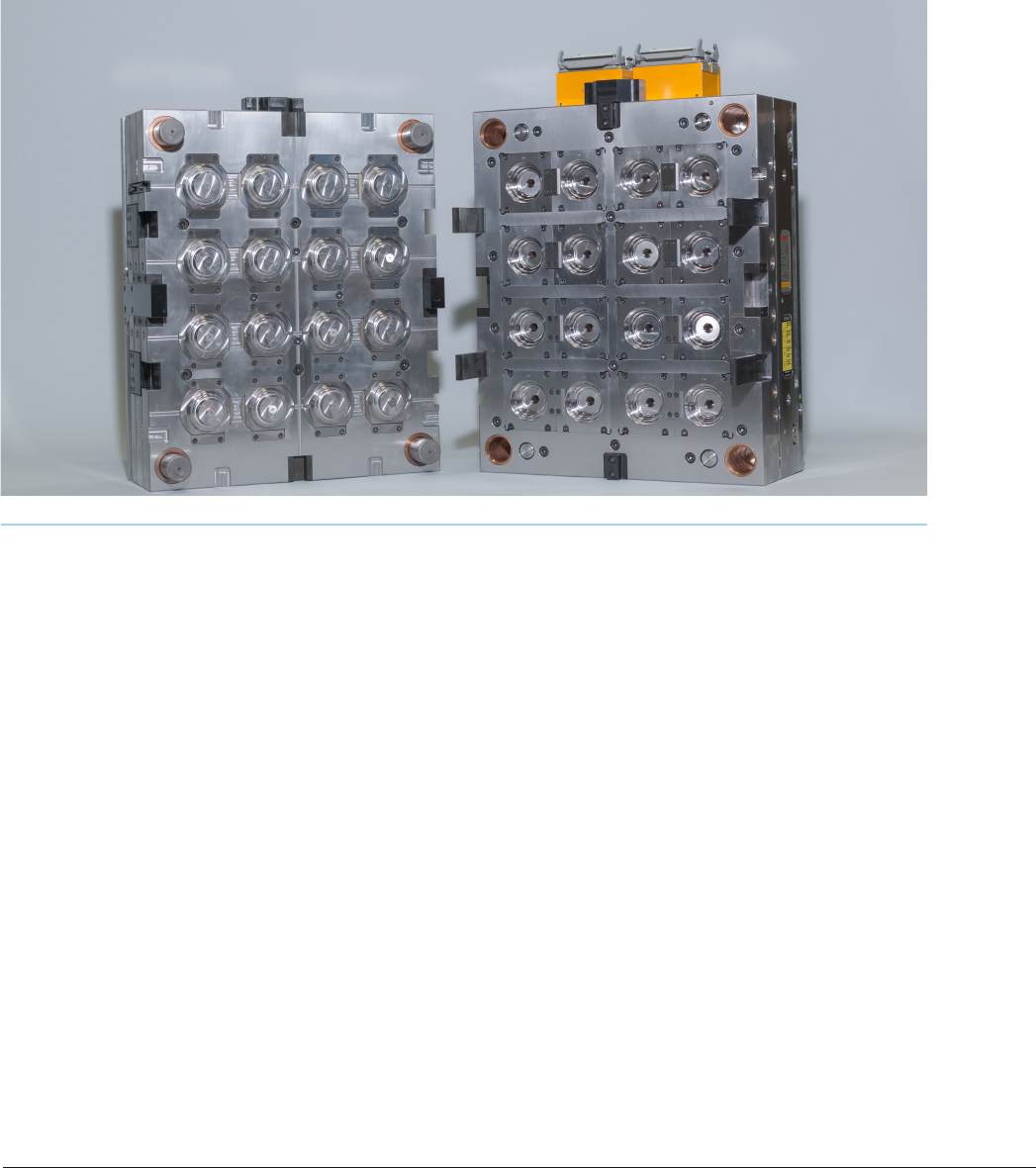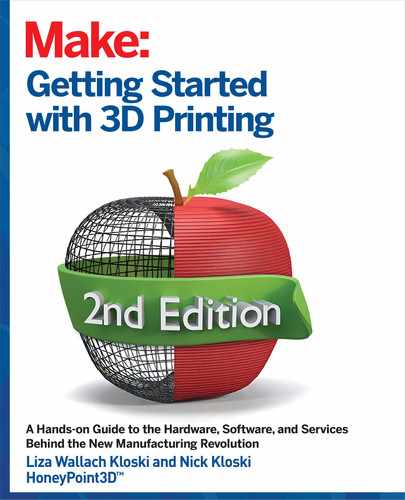
FIGURE 154: Example of a rapid prototyped new buggy toy model
the factory. You also don’t have to wait weeks or months to have expensive molds made. You can own a
3D printer and see the results of your model overnight. If the material and process are right, you can start
making products that day!
MANUFACTURING WITH 3D PRINTING HAS OTHER ADVANTAGES LIKE:
3D Printing allows for more flexible design choices. You can print more complicated designs
that would be impossible to make with traditional manufacturing methods in both plastics and
metals.
3D printed plastic parts can be an advantage if you need to minimize weight. This is especially
important in industries such as automotive and aerospace where light-weighting is beneficial
and can deliver greater fuel efficiency.
3D printing promotes creativity and innovation as the iterative process is less expensive.
3D Printing allows for parts to be quickly created from tailored materials for specific properties
such as heat resistance, higher strength or water repellency.
3D Printing allows for manufacturing on demand on your schedule.
3D printing is more affordable and has less of a start up cost.
Getting Started with 3D Printing 216
215 Chapter 15: How to Make a Prototype Using 3D Printing and Different Types of Manufacturing Methods
INTERIOR_3DPrinting_v21.indd 215INTERIOR_3DPrinting_v21.indd 215 4/14/2021 3:01:19 PM4/14/2021 3:01:19 PM

FIGURE 154: Example of a rapid prototyped new buggy toy model
the factory. You also don’t have to wait weeks or months to have expensive molds made. You can own a
3D printer and see the results of your model overnight. If the material and process are right, you can start
making products that day!
MANUFACTURING WITH 3D PRINTING HAS OTHER ADVANTAGES LIKE:
3D Printing allows for more flexible design choices. You can print more complicated designs
that would be impossible to make with traditional manufacturing methods in both plastics and
metals.
3D printed plastic parts can be an advantage if you need to minimize weight. This is especially
important in industries such as automotive and aerospace where light-weighting is beneficial
and can deliver greater fuel efficiency.
3D printing promotes creativity and innovation as the iterative process is less expensive.
3D Printing allows for parts to be quickly created from tailored materials for specific properties
such as heat resistance, higher strength or water repellency.
3D Printing allows for manufacturing on demand on your schedule.
3D printing is more affordable and has less of a start up cost.
3D printing is more environmentally friendly. It helps eliminate waste by only using the material
needed to build a part. Other methods require large blocks of material that the part is cut from.
3D Printing saves on resources and storage space and it also reduces the cost of the materials
being used.
3D printing enables local production. This saves time and doesn’t require expensive transpor-
tation costs compared to more traditional manufacturing processes produced abroad in other
countries.
In general, the economics of using 3D printing for manufacturing work best if you are producing fewer than
1,000 units. Figure 15-5 shows an example of a product that will probably be made under 100 units total and
would, therefore, be more economical to produce with 3D printing.
IT’S IMPORTANT TO NOTE THAT MANUFACTURING WITH 3D PRINTING HAS SOME DRAWBACKS AS
WELL:
3D printing materials are more limited than traditional manufacturing choices (where there are
many thousands of options) and so the resulting part might not have the exact same physical
and mechanical characteristics as the injection molded option. This is due to the fact that not all
FIGURE 155: An artist making the end product using 3D printing.
Getting Started with 3D Printing 216
215 Chapter 15: How to Make a Prototype Using 3D Printing and Different Types of Manufacturing Methods
INTERIOR_3DPrinting_v21.indd 216INTERIOR_3DPrinting_v21.indd 216 4/14/2021 3:01:21 PM4/14/2021 3:01:21 PM

metals or plastics can be temperature controlled enough to allow 3D
printing
Many 3D printing materials cannot be recycled and very few are food safe.
Another disadvantage becomes apparent when you are trying to man-
ufacture many thousands of units. At some point, it becomes more
economical to produce the part with other traditional methods than
with 3D printing.
3D printers currently have small print areas which restrict the size
of parts that can be printed. Models that exceed this available print
size will need to be printed in separate parts and joined together
after production. This can increase costs and time because you would
need more print runs and to pay for the manual labor to join the parts
together.
3D prints need post processing after they come off the build plate.
This includes removing support material and smoothing the surface
to achieve the desired finish. Post processing methods include water
jetting, sanding, a chemical soak and rinse, air or heat drying, assem-
bly and other methods.
3D prints are created by adhered layers but these layers can delami-
nate under certain stresses or orientations. This is particularly more
of a concern when using FDM printing.
3D printing materials can be more fragile and brittle than parts made
by melted and molded manufacturing methods.
3D printing may have more measurement discrepancies and looser
tolerances. Depending on the printer and material, the printed part
might not be as perfectly accurate as the CAD model.
3D printing uses more electrical power to produce single units.
Lastly 3D printing presents a low barrier to entry for copy infringe-
ments. An unscrupulous person that also has a 3D printer can copy
your product.
Ultimately, you will need to weigh the advantages and disadvantages of using 3D
printing as a manufacturing method. You can also decide to start with 3D print-
ing and move to other methods as needed.
Getting Started with 3D Printing 218
217 Chapter 15: How to Make a Prototype Using 3D Printing and Different Types of Manufacturing Methods
INTERIOR_3DPrinting_v21.indd 217INTERIOR_3DPrinting_v21.indd 217 4/14/2021 3:01:21 PM4/14/2021 3:01:21 PM

Traditional fabrication that has been around for many decades. The journey with
these methods can be fraught with obstacles and mistakes can be expensive!
They can also be economical and augment your use of 3D printing. The next
section of this chapter offers examples of what you might encounter if you select
something other than 3D printing.
EXAMPLES OF TRADITIONAL MANUFACTURING
There are many types of processes a manufacturer can use. We will high-
light the major high volume traditional production methods. These traditional
methods can be grouped into these main categories: casting, molding, machin-
ing, joining, shearing and forming. Sometimes a product will use one or more of
the above-mentioned categories. With any of these options, the main advantage
is lower cost per unit since you are producing many thousands of units at a time.
MOLDING
If the product you’re creating starts out as a liquid, chances are the manu-
facturer will use molding which is the “heavyweight” of the
manufacturing world. One popular type of molding involves
heating plastic until it becomes liquid, then pouring it into a
mold. Once the plastic cools, the mold is removed, giving you
the desired shape.
There are four other types of molding: injection molding,
which melts plastic to create 3D objects such as butter tubs
and toys; blow molding, used to make piping and milk bottles;
compression molding, used for large-scale products like car
tires; and rotational molding, used for furniture and shipping
drums.
The most popular molding process is called injection
molding. In the process of injection molding, a hard tool (part
of the mold) is created, usually, made of steel or aluminum.
The hard tool has an “A side” and a “B side” and was created
using a master pattern, usually with CNC machining (com-
puter numerical control) as shown in Figure 15-6. When
the halves are put together, they contain a voided space within and that void is
injected with plastics ranging in material property, durability, and consistency.
HINT:
When making a CAD model for any type of
production method, there are some design
considerations your engineer needs to con-
sider. These are often called DFM (Design for
Manufacturing) or DfAM (Design for Additive
Manufacturing). They are general engineering
practices of designing models in such a way
that will make them easier to produce. For
example, adding draft angles (measures in 1-3
degrees) to the sides of a model will reduce
the suction force to make the part easier to
release from a mold.
Getting Started with 3D Printing 218
217 Chapter 15: How to Make a Prototype Using 3D Printing and Different Types of Manufacturing Methods
INTERIOR_3DPrinting_v21.indd 218INTERIOR_3DPrinting_v21.indd 218 4/14/2021 3:01:21 PM4/14/2021 3:01:21 PM

FIGURE 156: Injection Mold with an “A” and “B” side for each half of the product
Hard tools created for injection molding are going to be subjected to a lot of stress and heat during the
injection process. They will create thousands of parts per day. The care that goes into creating a hard tool
involves intense machine programming which costs thousands of dollars alone. The high price for hard
tooling is balanced by the mass production capabilities the tooling brings. Plastic cups, dishware, and toys
are most commonly made using the process of injection molding because they are common consumer
items that need to be produced on a large mass scale.
MACHINING
Manufacturers use tools like saws, sheers and rotating wheels to achieve the desired result when creat-
ing something in metal. There are also tools that use heat to shape raw metal material. Laser machines
can cut a piece of metal using a high-energy light beam, and plasma torches can cut through hard metals
readily using electricity. Erosion machines apply a similar principle using water or electricity, and com-
puter numerical control machines (CNC) use a “subtractive” technology that cuts away material to form the
desired form.
JOINING
You can only get so far with molds and machines. At some point you need to be able to put multiple parts
together to make one piece. Otherwise, the parts can come apart easily. Joining uses processes like
welding and soldering to apply heat to melt together materials. Pieces can also be joined using adhesive
bonding or fasteners.
Getting Started with 3D Printing 220
219 Chapter 15: How to Make a Prototype Using 3D Printing and Different Types of Manufacturing Methods
INTERIOR_3DPrinting_v21.indd 219INTERIOR_3DPrinting_v21.indd 219 4/14/2021 3:01:22 PM4/14/2021 3:01:22 PM
..................Content has been hidden....................
You can't read the all page of ebook, please click here login for view all page.
